Cantonese Assembly Hall Hoi An, also known as Quang Trieu Temple, was built hundreds of years ago. With its distinctive traditional ancient beauty, in the heart of Hoi An Ancient Town, the Cantonese Assembly Hall continues to attract hundreds of visitors each day.
Table of Contents
Overview of the Cantonese Assembly Hall
Where is the Cantonese Assembly Hall located?
The Cantonese Assembly Hall (also known as Quang Trieu Temple) is situated at 176 Tran Phu Street, in Hoi An City, Quang Nam Province. Tran Phu Street is known as the “heritage street,” home to many unique and famous architectural landmarks. The Cantonese Assembly Hall is conveniently located near the Japanese Covered Bridge, making it a popular attraction for both domestic and international tourists every day.
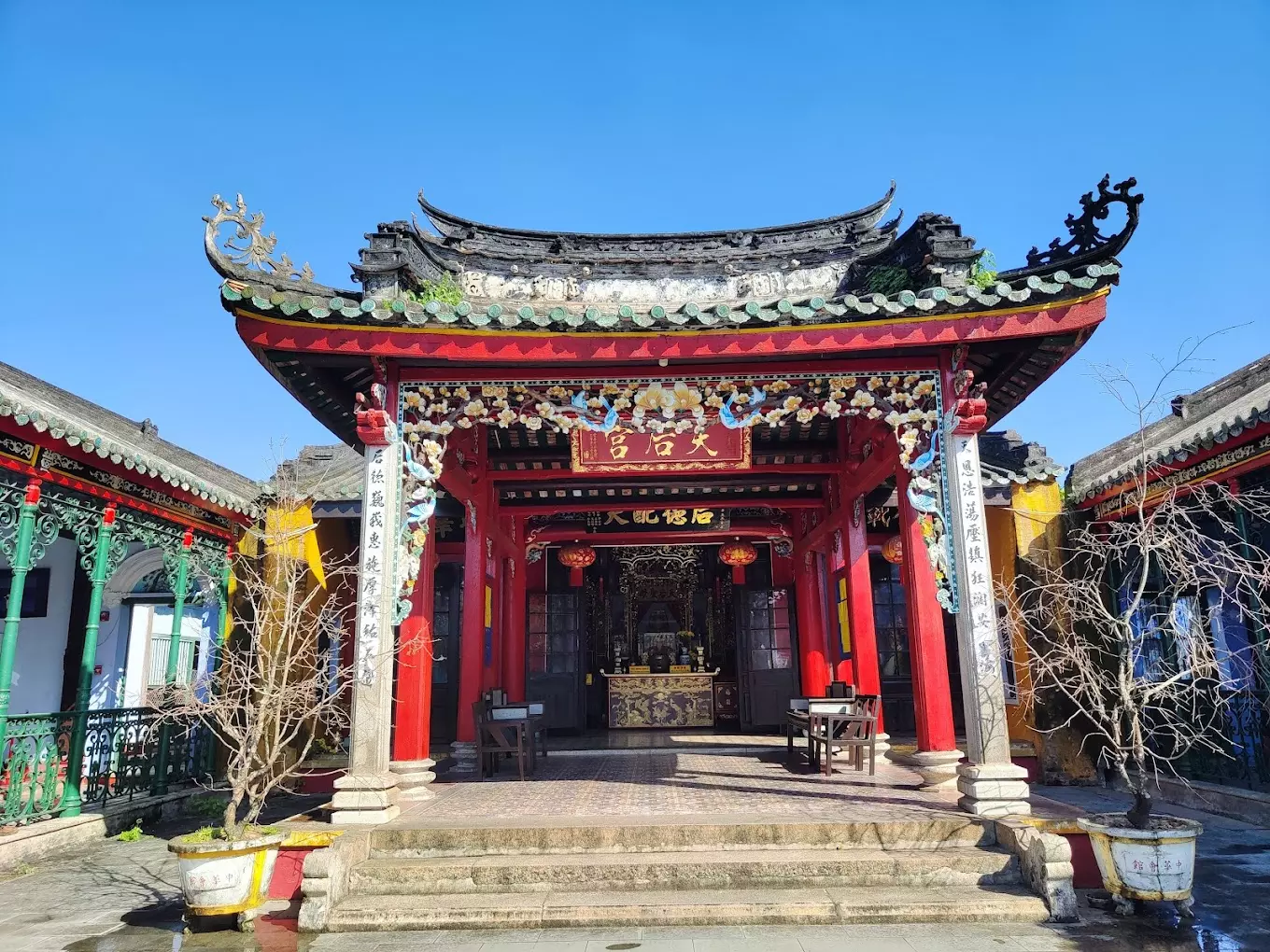
Introduction to the Cantonese Assembly Hall
The Cantonese Assembly Hall was built in the late 19th century, specifically in 1885, according to ancient records. It was established by the Cantonese merchant community. From the 15th to the 19th centuries, Hoi An was one of the major trading ports of Vietnam, making it a prime destination for foreign merchants, including Chinese traders. This led to the establishment of various assembly halls, serving as meeting places for commerce and community gatherings. To date, there are a total of five assembly halls in Hoi An.
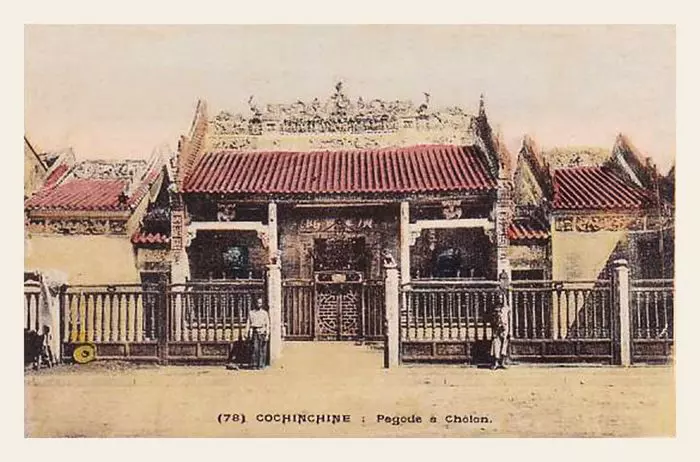
Initially, the Cantonese Assembly Hall was a place to worship the Holy Mother Thien Hau and Confucius. However, after 1911, it was converted to worship Guan Gong and the ancestors. Besides being a religious site, the hall also served as a community center for the Cantonese people in Hoi An, where regular meetings were held to support each other in trade and other aspects of life.
In addition to its formal name, Quang Trieu Temple, the hall is also known as Ong Temple. This name originates from the worship of Guan Gong, a revered Chinese general known for his loyalty, righteousness, trust, wisdom, humanity, and bravery. These six virtues were considered the key to business success by merchants of that time.
You can also check out articles about a famous assembly hall in Hoi An, such as the Fujian Assembly Hall (Phuc Kien ).
Architecture of the Cantonese Assembly Hall
General Architecture of the Cantonese Assembly Hall
An interesting fact about the construction of the Cantonese Assembly Hall is that each part of the building was crafted in China, then shipped by sea and assembled in Hoi An.
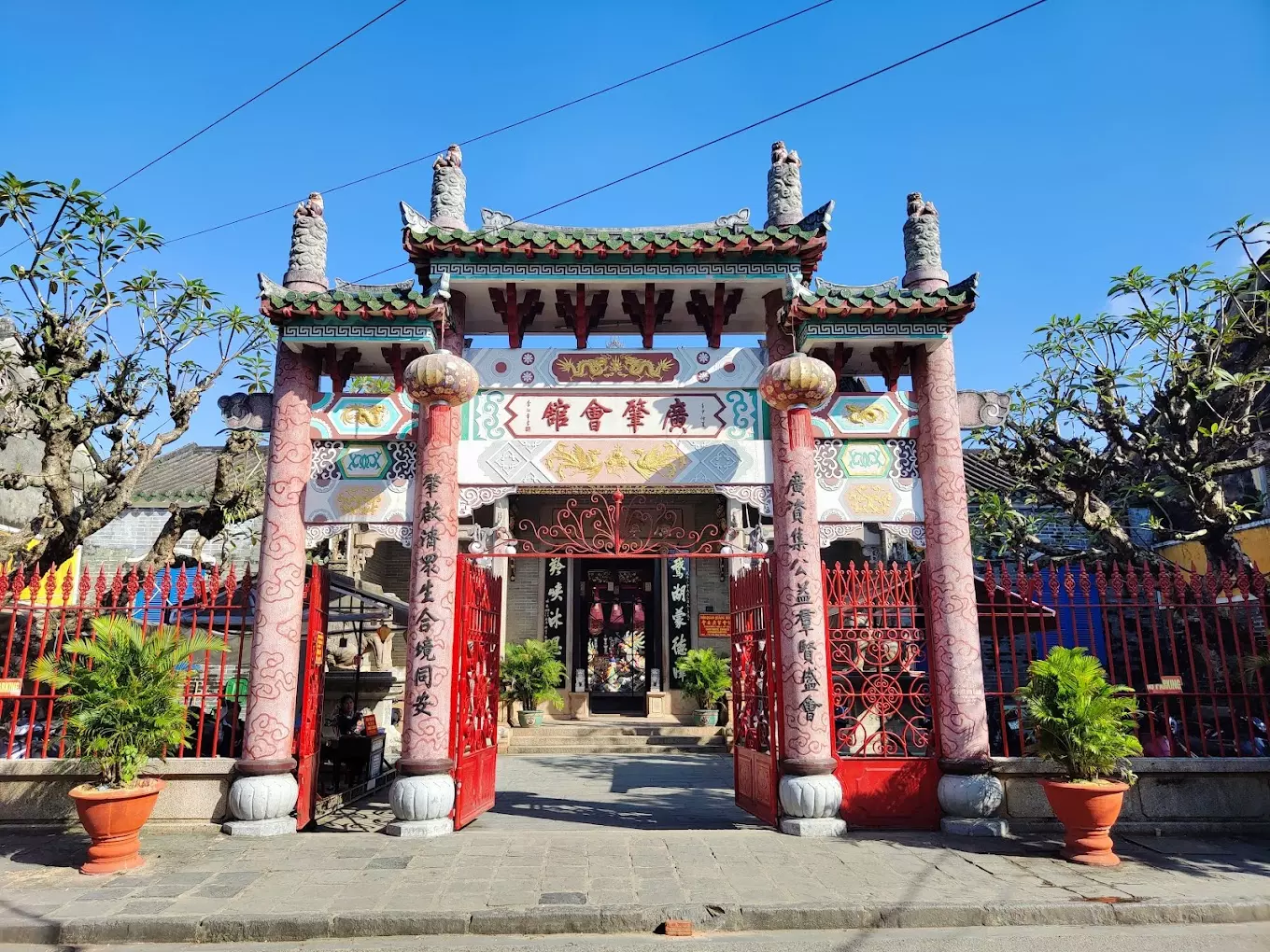
Built in the traditional Chinese architectural style, the hall features a unique layout shaped like the Chinese character “國” (meaning “country”). The Cantonese Assembly Hall is made from a combination of wood and stone, forming a closed structure that includes key elements such as the three-entrance gate, a spacious courtyard decorated with ornamental plants, a central pavilion (phuong dinh), two wings on the east and west, the main hall, and a rear courtyard.
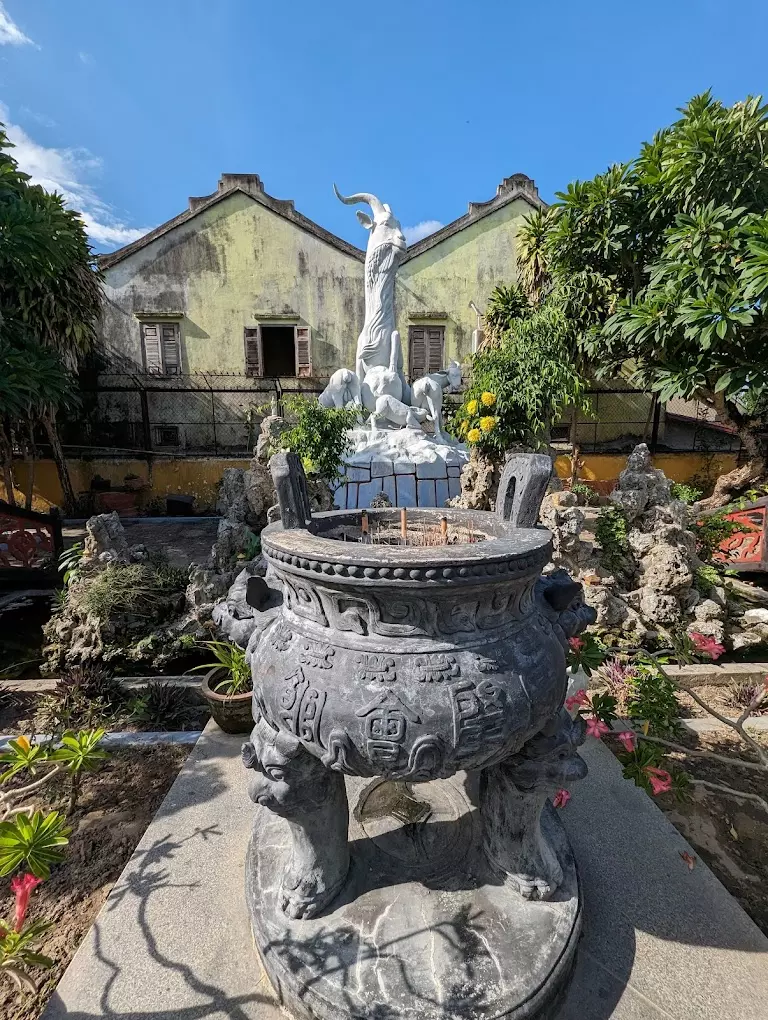
Although it shares architectural similarities with other assembly halls in Hoi An, the Cantonese Assembly Hall stands out due to its harmonious combination of materials like wood and stone for structural support. Additionally, the hall features intricate, meticulously crafted decorative details, making it a unique and unparalleled architectural gem.
General Courtyard Area of the Cantonese Assembly Hall
Right from the three-entrance gate on Tran Phu Street, the architecture of the Cantonese Assembly Hall stands out and immediately catches the eyes of visitors. The gate is a type with three passageways. Visitors will be amazed by the sight of the intricate dragons and qilins (mythical creatures) adorning the gate’s roof, along with other masterfully carved images on the columns. These delicate details are a testament to the craftsmanship of the artisans who created this masterpiece hundreds of years ago.
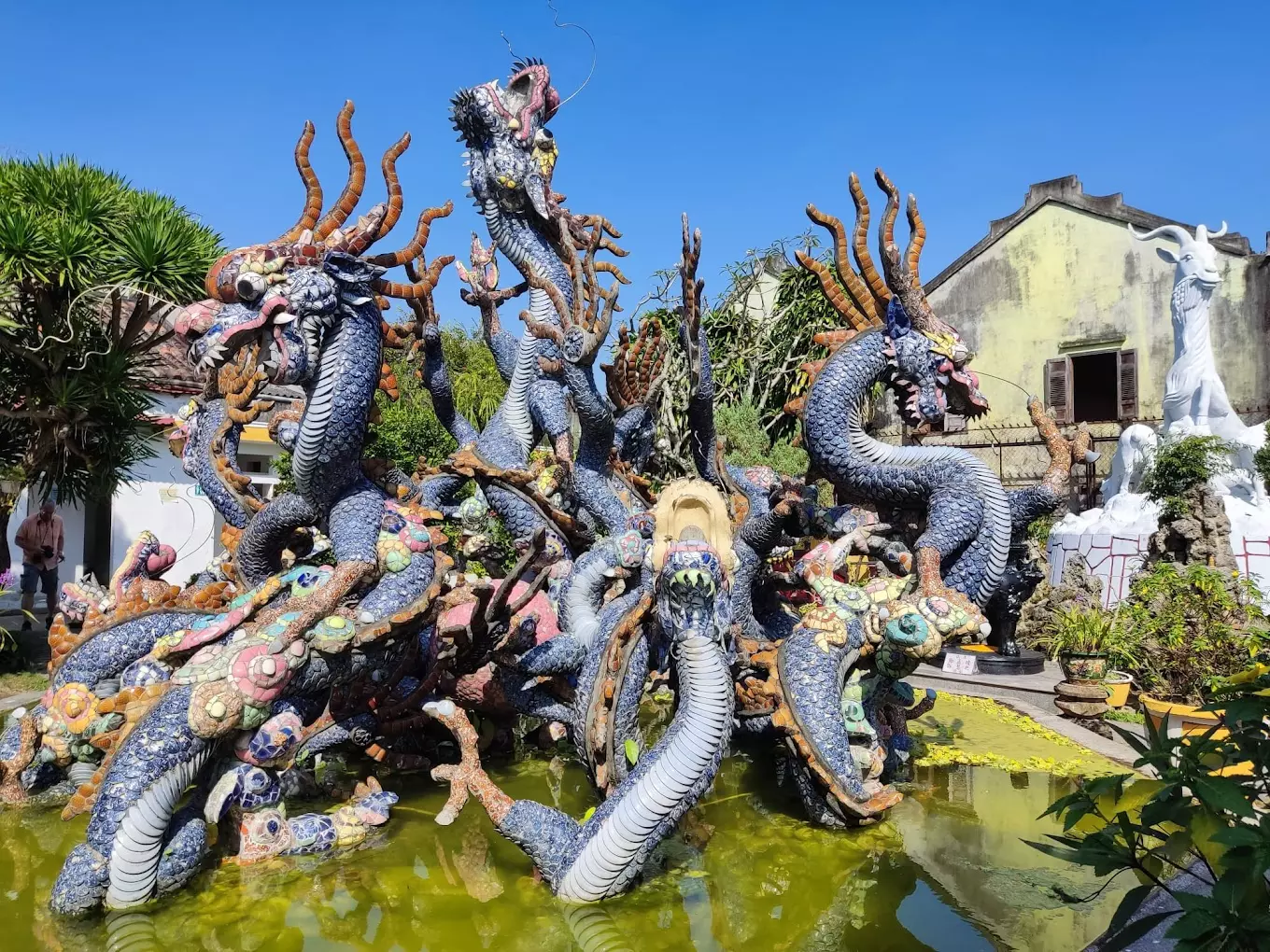
As visitors step into the courtyard of the Cantonese Assembly Hall, they will encounter a meticulously sculpted fountain, featuring a majestic dragon in a winding pose. From ancient times, the dragon has been considered a sacred beast in China, symbolizing power and authority.
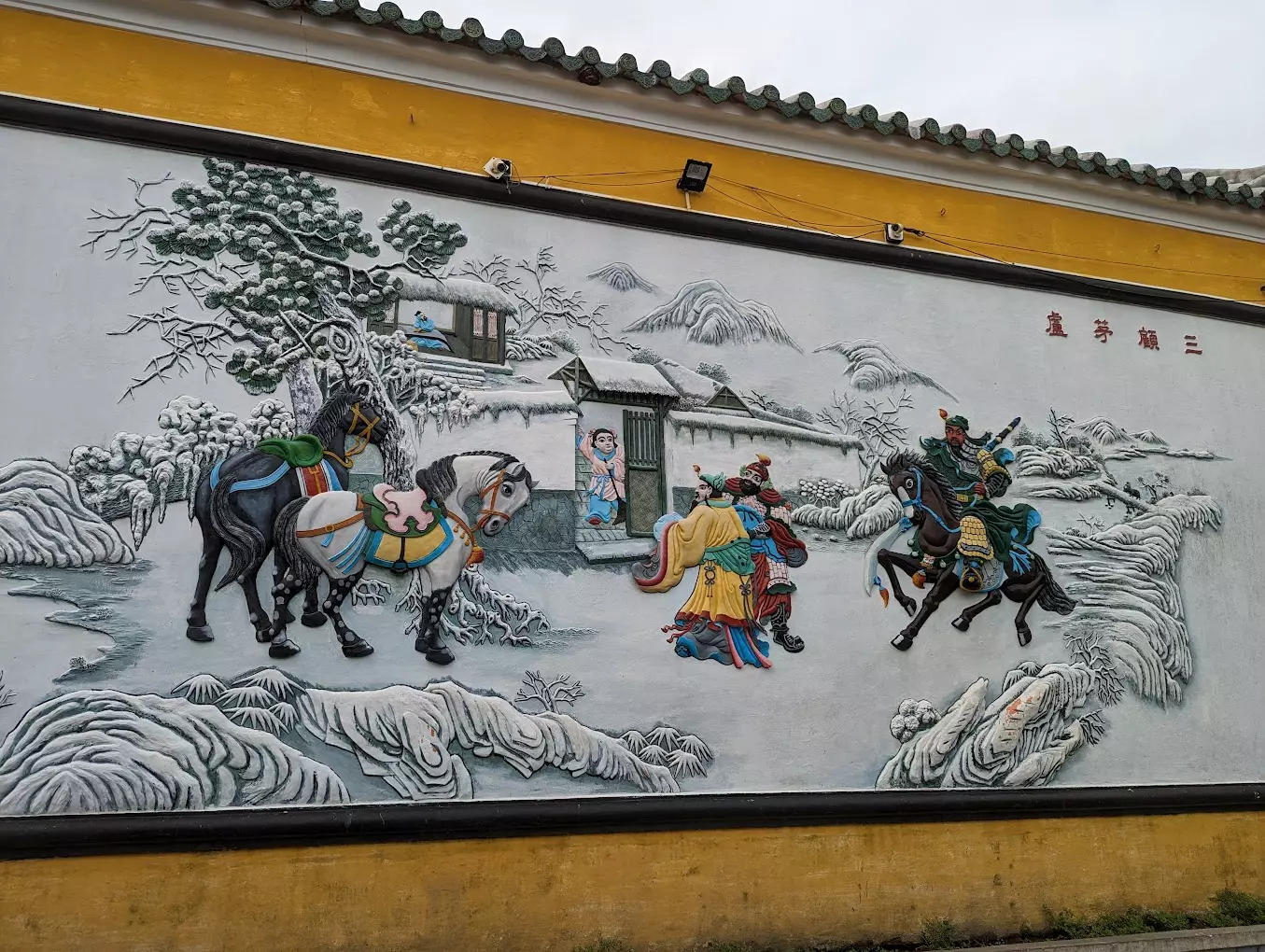
Surrounding the courtyard are ancient paintings adorning the walls, created by skilled hands with a strong sense of artistry. Visitors can also explore the two wings of the hall, located on the east and west sides. These two structures are simple in design but spacious and airy. The garden area of the hall is decorated with many ornamental plants and fountains, providing a fresh and serene atmosphere for visitors.
Main Hall of the Cantonese Assembly Hall
At the center of the Cantonese Assembly Hall is the large main hall, divided into three sections. The middle section is dedicated to the worship of Guan Gong, while the two side sections are for the worship of Phuc Duc Chanh Than and Tai Bach Tinh Quan.
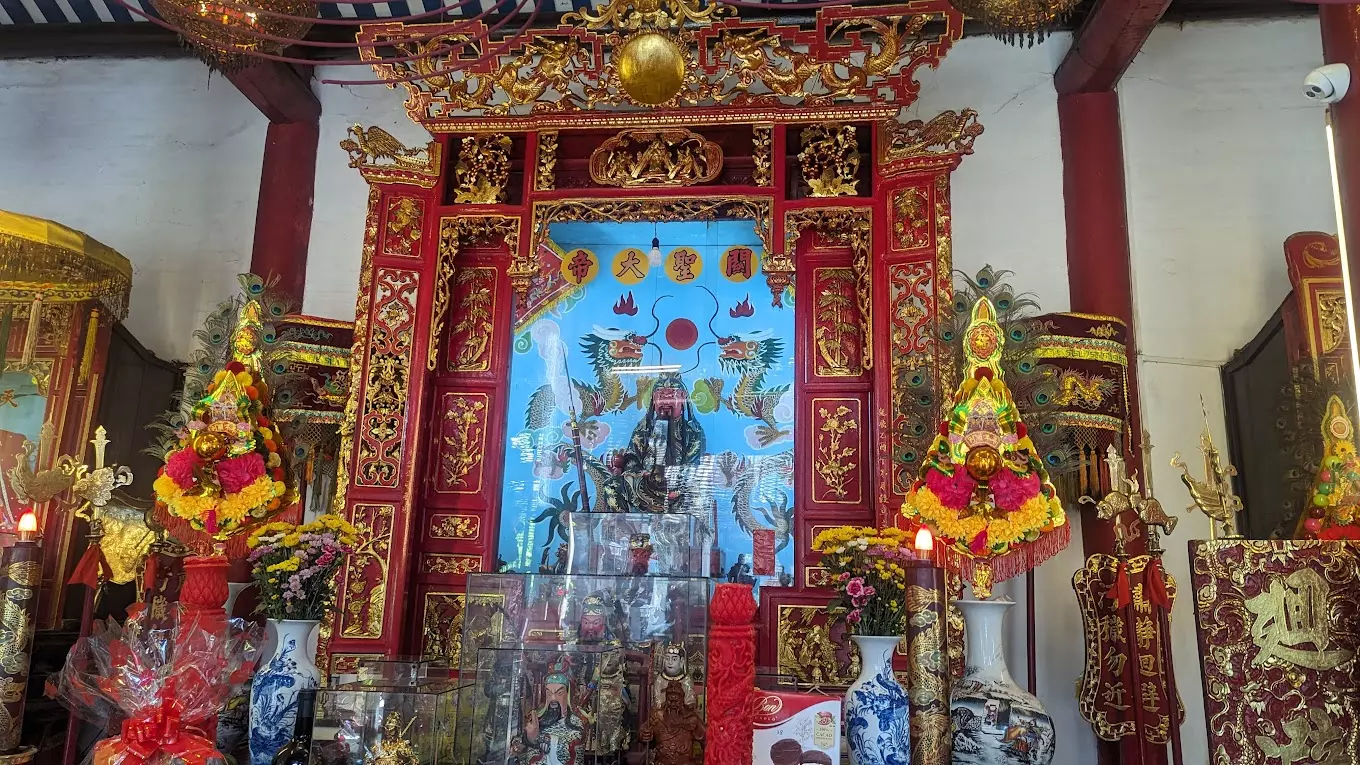
The design of the main hall is harmoniously crafted, with a grand system of columns and beams made from valuable types of wood, all securely connected by layers of finely carved wood brackets. The statues of deities are also intricately and meticulously sculpted. Thanks to the high-quality materials used, the colors have remained vibrant and lustrous, even after hundreds of years.
In addition, the main hall preserves many valuable artifacts. These include ancient ceramics, such as a pair of jade-glazed porcelain vases with a history of several centuries, and four large horizontal lacquered boards, as well as a bronze incense burner that stands 1.6 meters high and 0.6 meters wide. The walls of the main hall are also adorned with paintings that depict opera scenes and documents detailing the life of the Cantonese community from when they first arrived in ancient Hoi An.
Annual Highlights at the Cantonese Assembly Hall
Every year, on the full moon of the first lunar month, the Cantonese Assembly Hall hosts the Yuan Tiao Festival in Hoi An. This is the largest and most characteristic event of the hall. With traditional Chinese rituals, it includes offerings to the ancestors and prayers for peace, health, prosperity, and a flourishing family in the new year. Additionally, the hall organizes a reception for the Cantonese community every year.
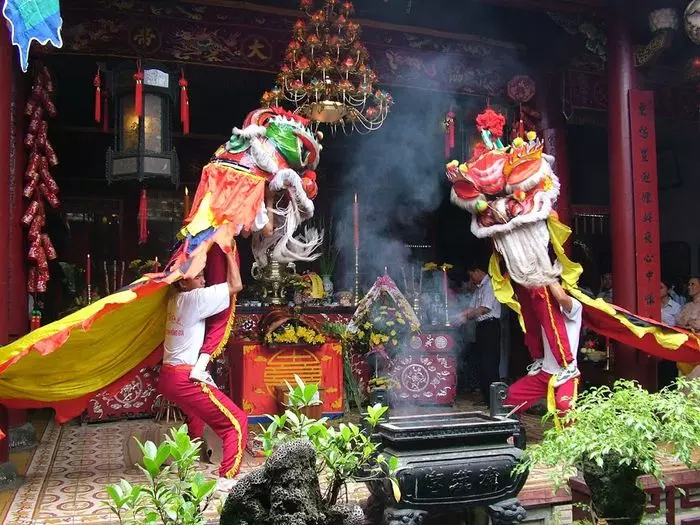
Moreover, on the 24th day of the sixth lunar month, the Guan Gong Worship Festival takes place at the Cantonese Assembly Hall to express gratitude and reverence to the talented general. Most of the festivals held at the assembly hall are dedicated to honoring the past while fostering and preserving the traditional culture of the Cantonese community in Hoi An. These events also serve as a great opportunity to attract many tourists who come to visit, light incense for prayer, and learn about the local beliefs.
Important Tips When Visiting the Cantonese Assembly Hall
- Appropriate Attire: Since this is a tourist site, it’s important to choose suitable clothing when visiting the assembly hall. Avoid wearing short pants/skirts, tank tops, or flashy makeup.
- Be Polite While Visiting: Refrain from speaking loudly or laughing, as this is considered disrespectful. Maintain cleanliness and respect the environment by disposing of trash in designated areas.
- Recommended Items: Wear flat shoes and bring sun protection items like an umbrella or sunscreen to ensure you can easily move around and visit multiple attractions in Hoi An.
Conclusion
If you have the chance to travel to Hoi An, don’t forget to visit the Cantonese Assembly Hall. With its unique and vibrant architecture, along with a serene atmosphere, the Cantonese Assembly Hall promises visitors a fulfilling and memorable spiritual travel experience. PrivateCarTransferHoiAn.com wishes you a joyful trip!



